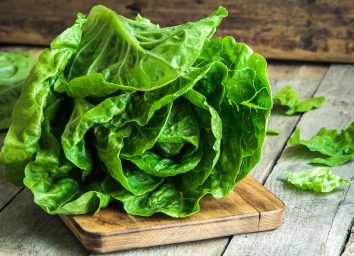Secret Side Effects of Eating Romaine Lettuce, Says Science
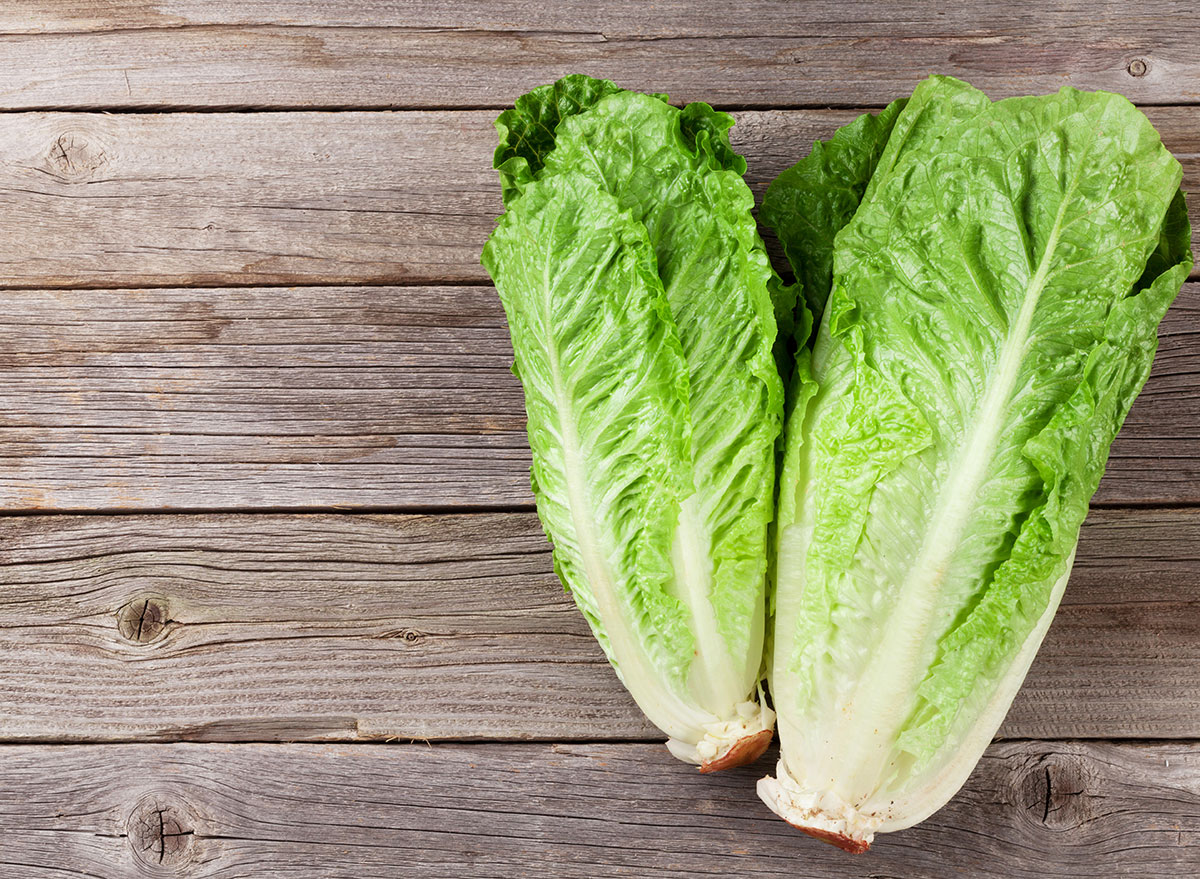
When it comes to talking about nutrient-dense salads, it’s usually kale or spinach in the spotlight. And although these types of leafy greens do pack a punch with nutrients, it’s important that we don’t forget about romaine lettuce!
Romaine lettuce is a classic salad choice, and it still carries way more health benefits than most people realize. But what are these benefits, and are there any negative aspects of choosing romaine? (Countless salad recalls come to mind.)
Continue reading to learn more about the side effects of eating romaine lettuce, and then don’t miss 7 Healthiest Foods to Eat Right Now.
You might increase your risk of E. coli or other foodborne illnesses
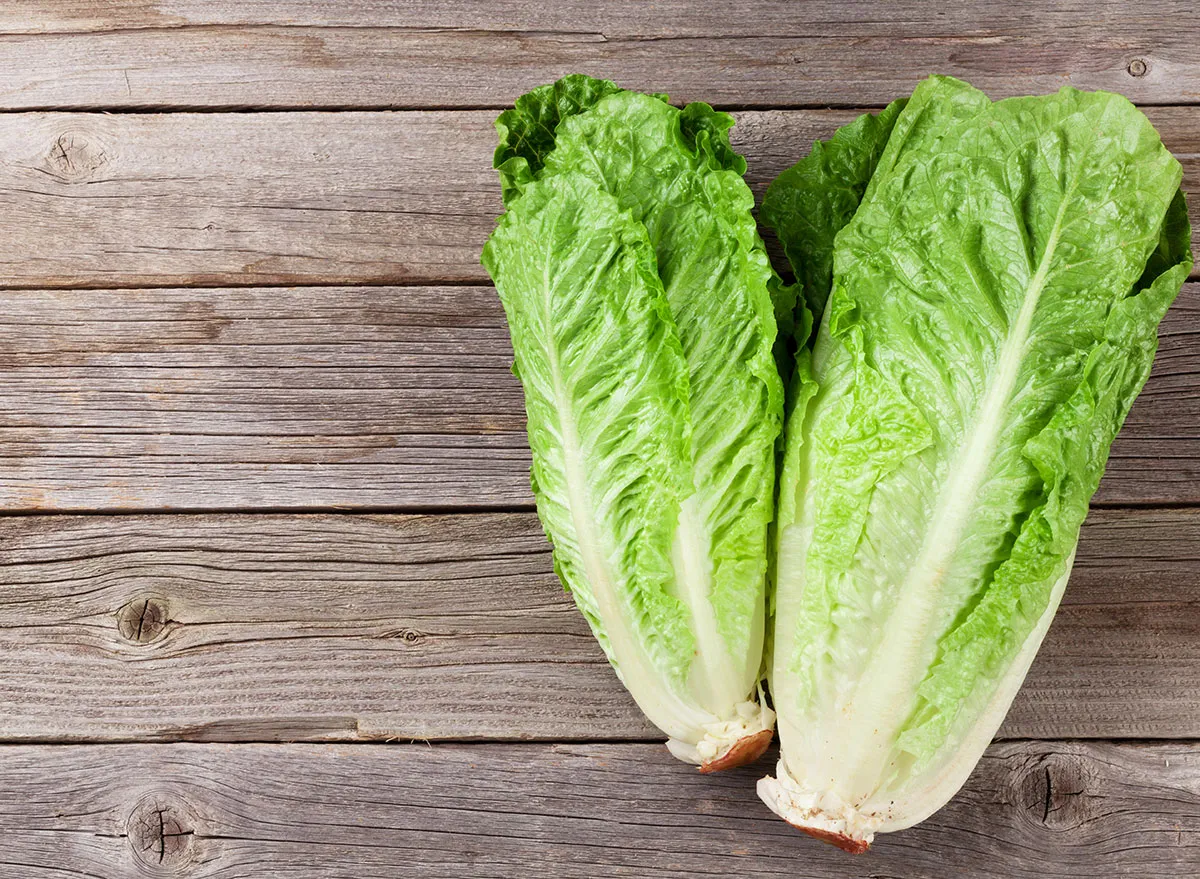
According to the CDC, 51 different food disease outbreaks between 2015-2018 were linked back to lettuce, with a recent case of E. coli being traced back to romaine lettuce in November 2020.
Lettuce and other leafy greens can increase our risk of food-borne illness through the growth or production process. The CDC explains that food contamination can occur at any point of the “production chain,” which is the process that includes preparation, production, processing, and distribution.
An example of this would be lettuce that was sprayed with contaminated water or being exposed to surfaces that weren’t cleaned after carrying animal products.
In order to lower your risk, the CDC recommends washing your hands thoroughly before you clean your lettuce, as well as running it under the faucet instead of soaking it in a bowl of water. They also suggest using a clean towel to pat the lettuce dry.
RELATED: Sign up for our newsletter to get daily recipes and food news in your inbox!
You may lower your blood pressure
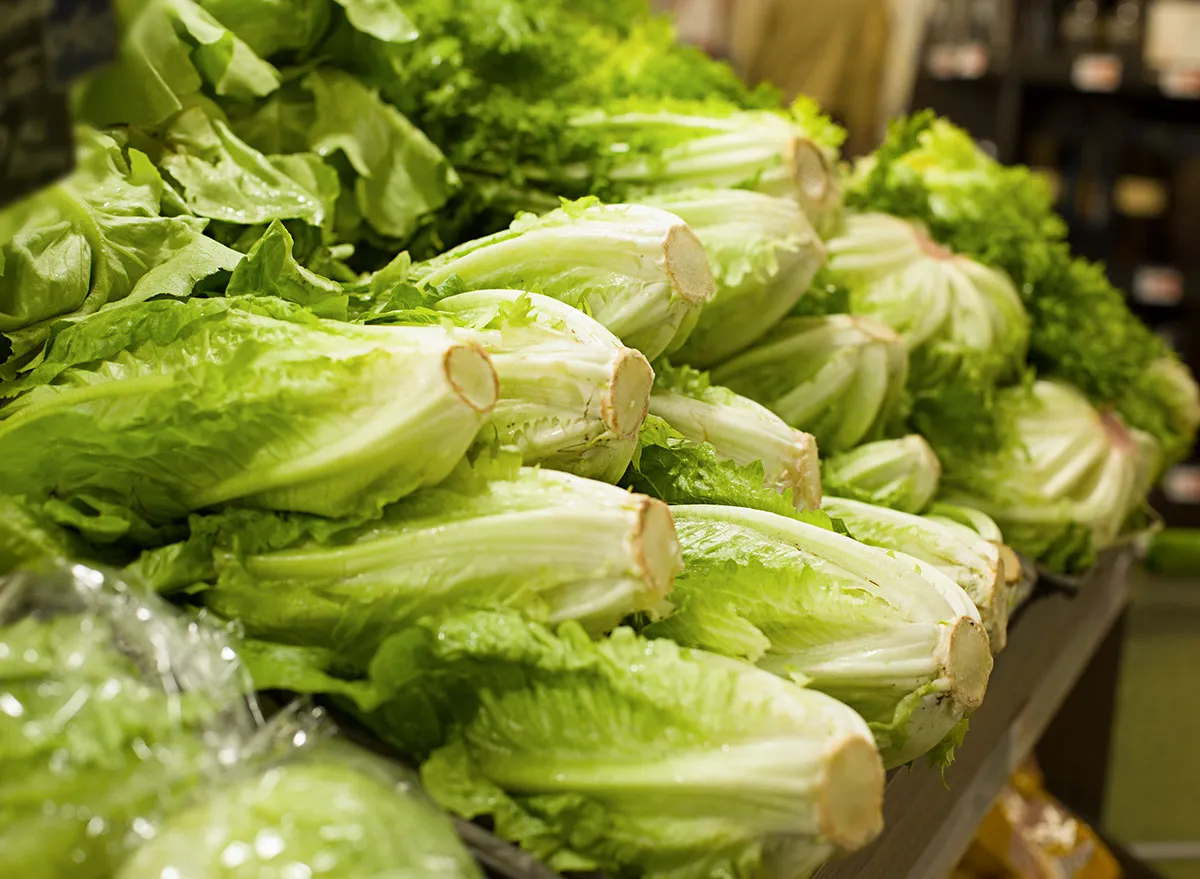
Romaine lettuce is a great source of potassium, with one cup having about 116 milligrams. For some perspective, a cup of kale has only about 71 milligrams of potassium.
You’re not going to get as much potassium with romaine lettuce as you would with something like a banana, which has about 375 milligrams, but bananas also have about 18 grams of sugar compared to the one gram in romaine lettuce.
Potassium has incredible benefits for your health. A report from The British Medical Journal revealed that consistent potassium intake can lower blood pressure in people who are living with hypertension, as well as lower their risk of stroke significantly.
You’ll get a boost of calcium
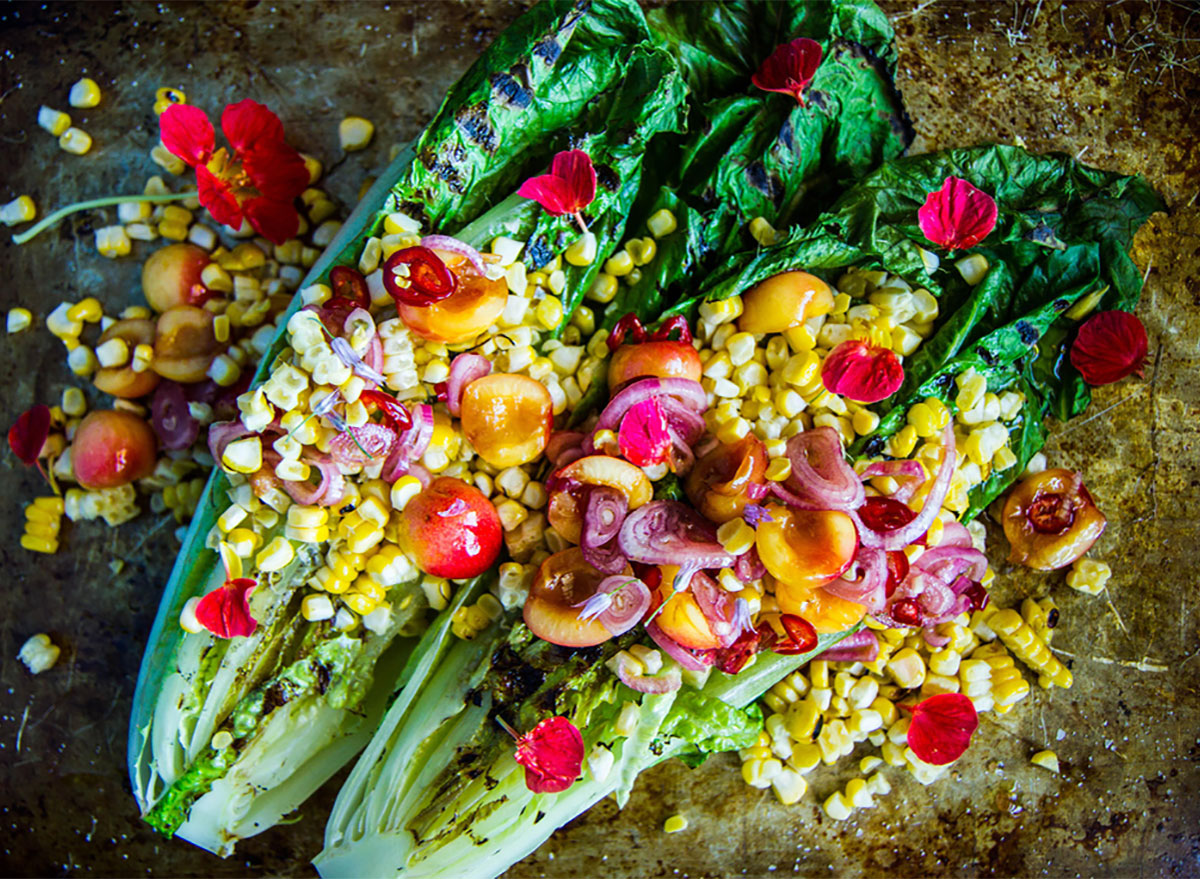
Calcium is an essential nutrient for your health and can impact multiple areas of your body such as your bones, teeth, kidneys, and even your cardiovascular system.
Research has shown that even though a lot of emphasis is placed on getting enough calcium at an early age for healthy bone development, it’s actually necessary throughout our entire lives.
At 15.5 milligrams per cup, romaine lettuce by itself won’t give you nearly enough calcium to meet the daily recommendation of about 1,000 milligrams for the average adult. We shouldn’t, however, diminish the value of eating nutrient-dense, low-calorie foods that contain calcium whenever we can!
You’ll consume a ton of nutrients with very few calories
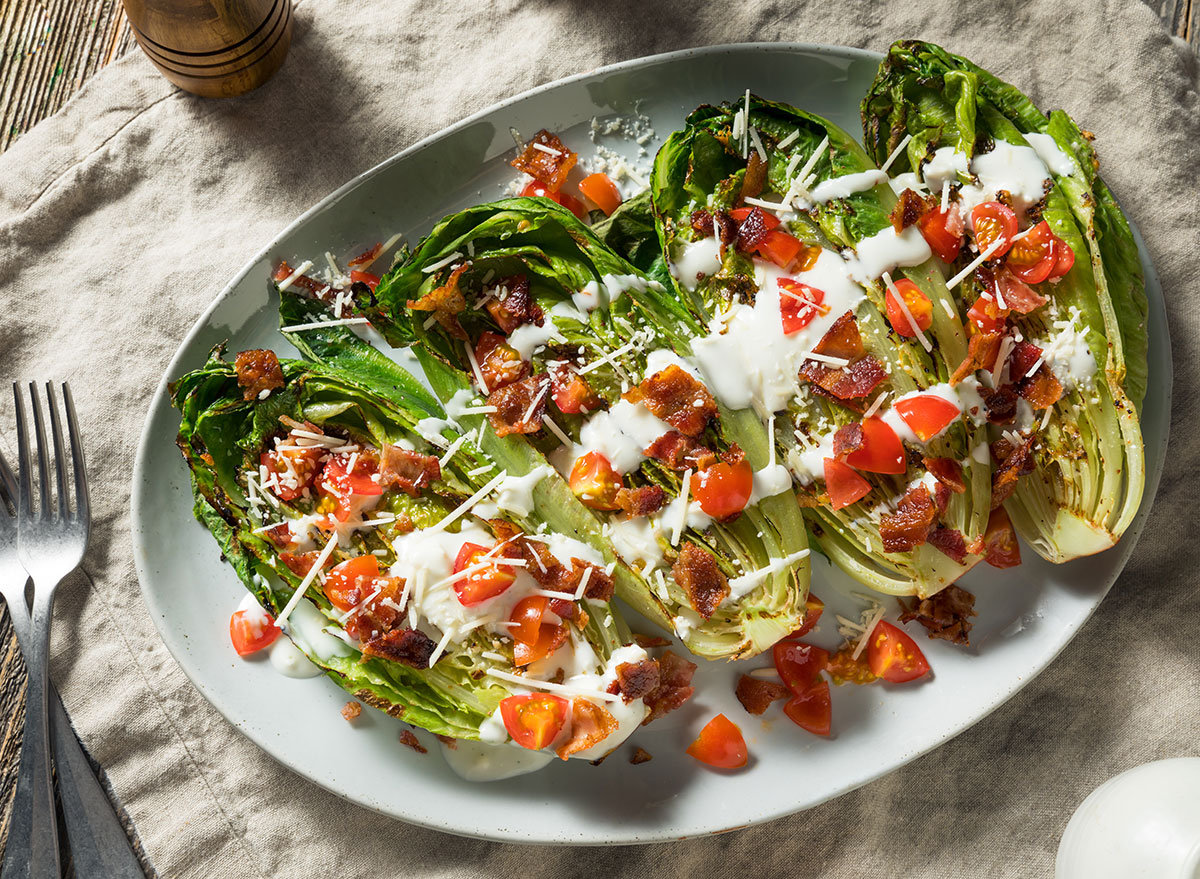
One of the perks of lettuce is that your body gets a ton of nutrients from vitamins and antioxidants, as well as a decent amount of fiber, all for very few calories. For example, there are only 8 calories in a cup of romaine lettuce, with one gram of carbohydrates and less than half of a gram of fat.
One of the reasons romaine has such few calories is because of its high water content, with 94.6 grams of water per 100 grams of romaine lettuce. This not only helps us save calories, but it can help hydrate us, too.
Read these next:
